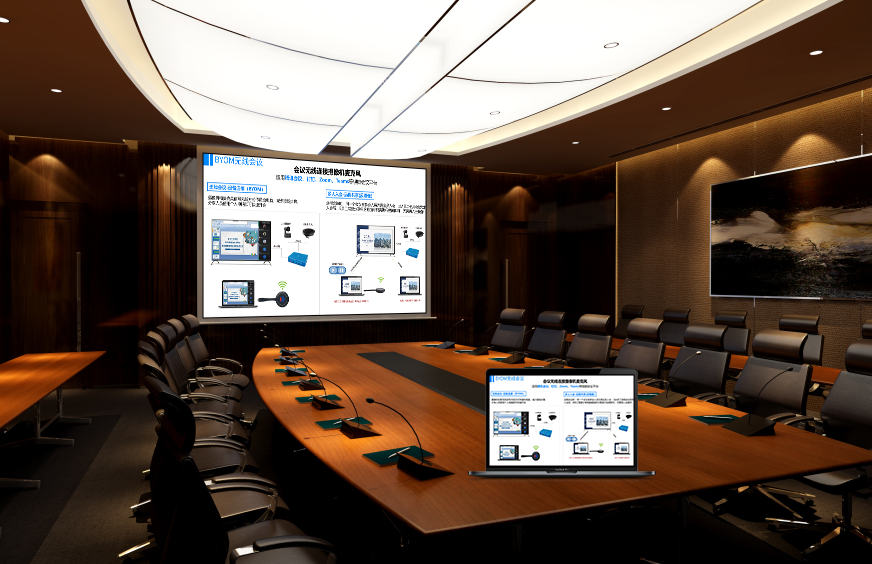Wireless Screen Mirroring SDK: Quickly Integrate Cross-Screen Capabilities
The wireless screen mirroring SDK offers a lightweight solution for integrating mirroring features into smart devices and software platforms. It supports multi-protocol compatibility and customization for various scenarios. With a focus on easy integration, high compatibility, and strong stability, it helps companies quickly add cross-screen collaboration to their products, reducing development costs and improving the user experience.
Universal Protocol Compatibility for Wide Adaptation
It deeply integrates mainstream mirroring protocols like AirPlay, Miracast, DLNA, and WiDi. It covers all types of sending devices, including Android/iOS phones, Windows/macOS computers, and tablets. It also adapts to a variety of display devices like smart TVs, large meeting screens, projectors, car displays, and educational tablets. The SDK can be tailored to your needs, so you can select a single protocol or a combination of multiple protocols based on your product’s purpose. It has a compatibility rate of over 98%, meeting the mirroring needs of devices in various industries.
Lightweight Integration, Low Development Threshold
Simple Integration Process It provides development packages for Android, iOS, Windows, and Linux. The API documentation is clear and easy to understand, and core functions can be implemented with just 3-5 lines of code. It supports multiple integration methods, including native development, web integration, and embedding into mini-programs. It works with different application forms like apps, system firmware, and web platforms, shortening the development cycle by over 60%.
Complete Technical Support It comes with full demo examples, a development manual, and debugging tools. It also offers 24/7 technical support to help with protocol adaptation, compatibility debugging, and other issues during the integration process. It supports both on-premise and cloud deployment modes, meeting a company’s different needs for data security and deployment environments.
High Stability and Customization to Meet Business Needs
Reliable Transmission Performance It uses a proprietary, optimized transmission algorithm that supports 1080P Full HD and 4K Ultra HD mirroring. Transmission latency is as low as 15ms, and the audio-video sync is precise. With a built-in dynamic anti-interference mechanism, it can maintain a stable connection even in complex signal environments with multiple devices running at once. The disconnection rate is less than 0.1%, ensuring a smooth mirroring experience.
Flexible Customization Capabilities
- Functionality: You can enable features like split-screen mirroring, reverse control, real-time annotation, mirroring watermarks, and access control on demand, which meets the specific needs of different scenarios like education, office, and in-car use.
- UI: It offers customizable UI styles for the mirroring entrance, connection interface, and status prompts. It also supports embedding a brand logo to maintain a consistent product experience.
- Permission Management: It supports multiple access controls, including a device whitelist, mirroring password, and time-based authorization. It can be integrated into a company’s existing account system to ensure content security.
Empowering Products Across Industries
Smart Hardware
- Meeting Devices: You can integrate wireless mirroring into smart meeting screens and projectors, enabling one-tap mirroring of presentations from phones and computers. Paired with split-screen display and annotation features, it boosts meeting collaboration efficiency.
- In-Car Systems: You can integrate mirroring into in-car systems, so you can mirror phone navigation, music, and videos to the car’s large display, making the operation more convenient and improving the driving experience.
Software Platforms
- Education Apps: You can integrate mirroring into online education platforms, so a teacher can mirror a lesson and a student can mirror their homework. Paired with real-time annotation, it creates a blended online and offline teaching scenario.
- Office Software: You can embed mirroring into collaborative office tools and document management platforms, enabling wireless display of documents, spreadsheets, and presentations and helping with remote collaboration.
Industry Solutions
- Smart Classrooms: You can provide the mirroring SDK for educational solutions. When it’s integrated into classroom terminals and teacher/student devices, it enables multi-screen synchronization and resource sharing, supporting interactive teaching scenarios.
- Commercial Displays: You can integrate mirroring into digital signage and ad players, so a business can quickly update display content from their phone, which is flexible for promotions and information releases.
The wireless screen mirroring SDK, with its advantages of “low cost, high efficiency, and high compatibility,” helps companies bypass the barriers of low-level protocol development and quickly give their products professional-grade mirroring capabilities, boosting business scenarios and improving the user experience.